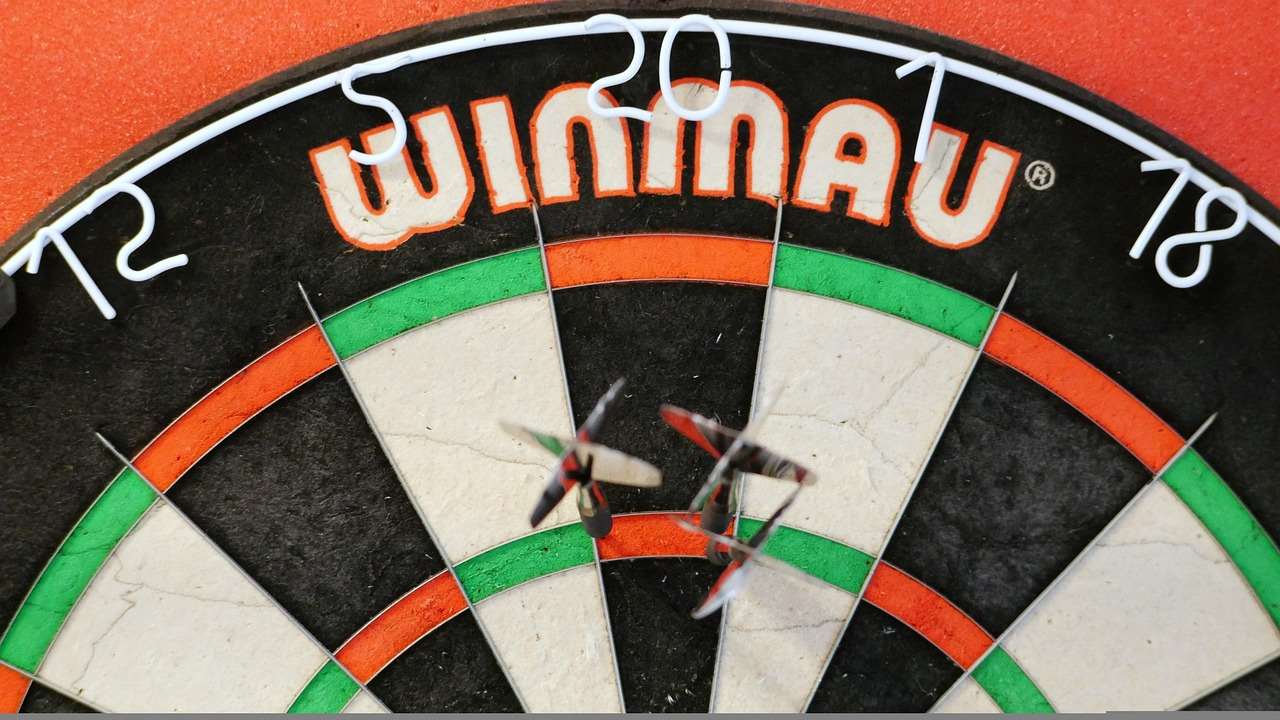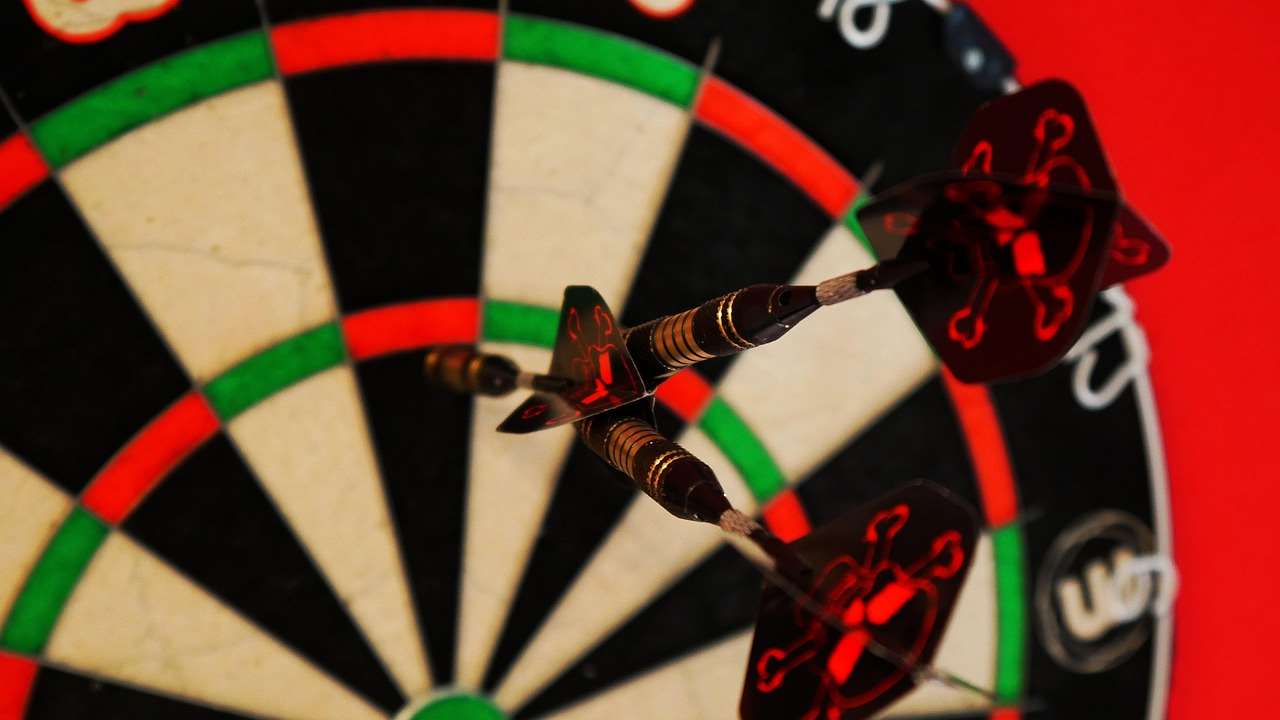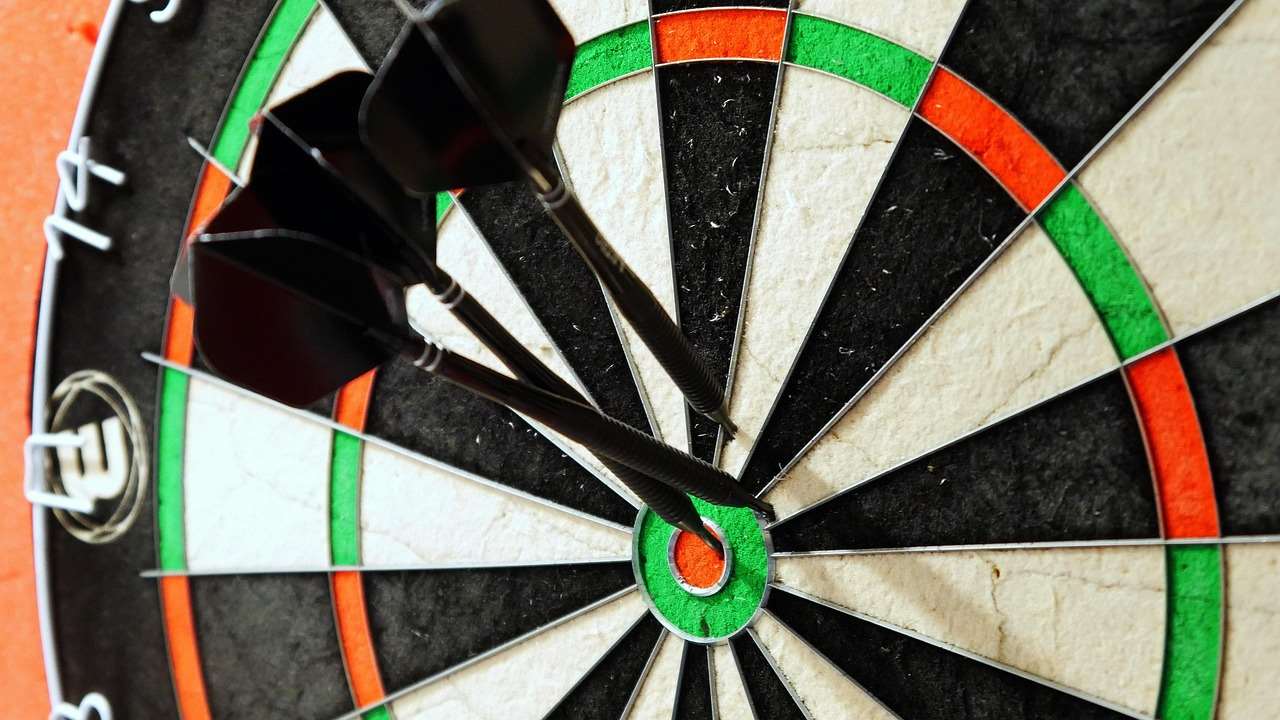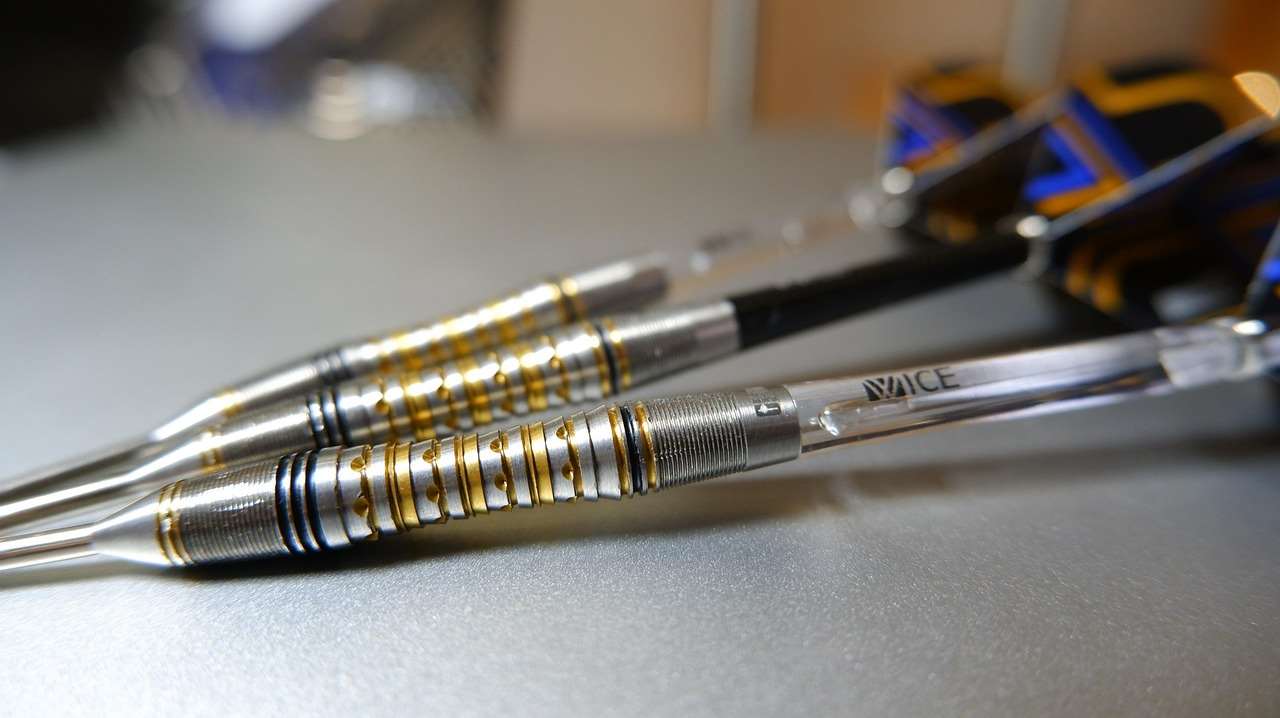Perfecting your darts gooitechniek is crucial for consistency and accuracy, and the key lies in understanding the fundamentals of stance, grip, and release. This article will break down the essential elements of a proper throwing technique, covering everything from stance and grip to arm motion and follow-through, helping you improve your game and consistently hit your target.
⚠️ Still Using Pen & Paper (or a Chalkboard)?! ⚠️
Step into the future! The Dart Counter App handles all the scoring, suggests checkouts, and tracks your stats automatically. It's easier than you think!
Try the Smart Dart Counter App FREE!Ready for an upgrade? Click above!
Understanding the Fundamentals of Darts Gooitechniek
Mastering the darts gooitechniek isn’t just about throwing darts; it’s about developing a repeatable, efficient motion that minimizes variation. This starts with a solid foundation, encompassing your stance, grip, and overall posture. Understanding each component will allow you to diagnose and correct any issues affecting your accuracy and consistency on the dart oche wie hoch.
The Importance of a Consistent Stance
Your stance is the bedrock of your throwing motion. A stable and balanced stance provides a consistent platform for your arm to deliver the dart. There are primarily three types of stances:
- Front-on Stance: Facing the board directly, this stance offers maximum stability but can limit your throwing range.
- Angled Stance: Positioning yourself at an angle (usually 45-90 degrees) to the board allows for a smoother throwing motion and better line of sight. This is the most popular stance amongst professional players.
- Side-on Stance: Facing almost entirely to the side, this stance offers the most throwing range but can sacrifice some stability.
Experiment to find the stance that feels most natural and allows you to maintain balance throughout your throw. Place one foot forward (usually your dominant side) and ensure your weight is evenly distributed. Avoid swaying or shifting your weight during your throw, as this can disrupt your aim.
Finding the Right Grip
Your grip is the connection between you and the dart. It should be firm enough to maintain control but relaxed enough to allow for a smooth release. There’s no single “correct” grip; it’s a matter of personal preference and comfort. However, there are some general principles to keep in mind:
- Finger Placement: Experiment with different finger placements (two, three, or even four fingers on the barrel). Find a grip that feels secure and allows you to point the dart accurately.
- Pressure: Avoid gripping the dart too tightly, as this can cause tension in your arm and affect your release. Aim for a relaxed grip that allows the dart to flow naturally from your hand.
- Consistency: Once you find a grip that works, stick with it. Avoid changing your grip frequently, as this will make it difficult to develop consistent muscle memory. Consider using specialized dart shaft vecta products for enhanced grip.
Remember, the ideal grip should provide control without restricting your throwing motion. Try different grips and consciously note the impact they have on your darts gooitechniek.

The Throwing Motion: A Step-by-Step Guide
The throwing motion is the culmination of your stance and grip, transforming potential energy into kinetic energy to propel the dart towards the board. A smooth, controlled, and repeatable throwing motion is essential for accuracy and consistency.
The Setup and Aiming
Before each throw, take a moment to visualize your target. Focus your eyes on the segment you intend to hit, whether it’s the treble 20 or the bullseye. Raise your throwing arm to a comfortable position, keeping your elbow aligned with your target. The dart should be at eye level or slightly above. This is your anchor point – the position from which you’ll initiate your throw. Make sure to check out the Automatic dart scoring app.
The Backward Swing and Forward Thrust
Initiate the throw with a smooth, controlled backward swing. Keep your elbow relatively stationary and let your forearm do the work. Avoid jerky or abrupt movements. The backward swing should be a natural extension of your aiming motion, allowing you to build momentum for the forward thrust. As you begin your forward swing, focus on accelerating the dart towards your target. Maintain a straight line from your elbow to your hand, and release the dart at the peak of your acceleration. Practicing this is key to perfecting your darts gooitechniek.
The Release and Follow-Through
The release is the most critical part of the throwing motion. It should be clean and consistent, allowing the dart to leave your hand smoothly. Avoid snapping your wrist or jerking your fingers, as this can impart unwanted spin on the dart. After releasing the dart, follow through with your arm towards your target. This helps maintain a consistent trajectory and prevents you from stopping your motion prematurely. Imagine pointing your fingers at the segment you aimed for, even after the dart has left your hand.
Key points to remember:
- Keep your elbow relatively still throughout the throw.
- Accelerate smoothly from the backward swing to the forward thrust.
- Release the dart cleanly at the peak of your acceleration.
- Follow through with your arm towards your target.

Common Mistakes and How to Correct Them
Even with a solid understanding of the fundamentals, it’s common to encounter challenges when developing your darts gooitechniek. Identifying and correcting these common mistakes is crucial for breaking through plateaus and improving your accuracy.
Inconsistent Stance and Weight Distribution
One of the most frequent errors is an inconsistent stance or uneven weight distribution. This can lead to swaying, shifting, or wobbling during your throw, disrupting your aim. To correct this, focus on establishing a stable and balanced stance before each throw. Distribute your weight evenly between your feet and consciously maintain that balance throughout your throwing motion. Practice in front of a mirror to monitor your stance and identify any unwanted movement.
Gripping Too Tightly or Too Loosely
As mentioned earlier, your grip plays a vital role in your accuracy. Gripping the dart too tightly can cause tension in your arm, while gripping it too loosely can result in a loss of control. Experiment to find the optimal grip pressure that allows you to maintain control without restricting your throwing motion. Record yourself throwing and look for tension in your hand, wrist, and forearm.
Elbow Movement and Wrist Snap
Excessive elbow movement or wrist snap can introduce inconsistencies into your throw. Your elbow should remain relatively stationary throughout the throwing motion, acting as a hinge for your forearm. Your wrist should remain firm, avoiding any snapping or jerking movements. Focus on using your forearm to generate power and control, rather than relying on your elbow or wrist.
Premature Release and Incomplete Follow-Through
Releasing the dart too early or failing to follow through can lead to inconsistent dart trajectories. Ensure that you release the dart at the peak of your acceleration and follow through with your arm towards your target. This helps maintain a consistent trajectory and prevents you from stopping your motion prematurely.

Advanced Techniques for Darts Gooitechniek
Once you’ve mastered the fundamentals and corrected common mistakes, you can explore advanced techniques to further refine your darts gooitechniek. These techniques focus on subtle adjustments and mental strategies that can elevate your game to the next level.
Mental Visualization and Pre-Throw Routine
Mental visualization involves creating a clear mental image of your desired outcome before each throw. Visualize the dart flying through the air and hitting your target. This can help you focus your mind and improve your confidence. Develop a consistent pre-throw routine to help you get into the right mental state before each throw. This routine could involve taking a deep breath, focusing your eyes on your target, or performing a specific physical movement. Incorporating visualization techniques can lead to better scores, and you might even avoid a darts bust score.
Adjusting Your Throw for Different Segments
As you progress, you’ll need to develop the ability to adjust your throw for different segments of the board. This involves making subtle adjustments to your stance, grip, or aiming point to compensate for the distance and angle of the target. For example, you may need to adjust your stance slightly when aiming for the treble 20 compared to the bullseye. Practice throwing at different segments of the board and consciously note the adjustments you need to make to maintain accuracy.
Understanding Dart Trajectory and Flight Path
Understanding the trajectory and flight path of your darts can help you fine-tune your throwing motion. Pay attention to how your darts fly through the air and how they land in the board. If your darts are consistently landing with the point up or down, you may need to adjust your grip or release point. Experiment with different dart setups, such as different dart flights nearby or shaft lengths, to optimize your dart trajectory.

Practicing Your Darts Gooitechniek for Optimal Results
Consistent practice is the key to mastering any skill, and darts gooitechniek is no exception. Regular practice sessions will help you develop muscle memory, refine your throwing motion, and improve your accuracy. The more you practice, the more ingrained your throwing motion will become, leading to greater consistency and confidence.
Structured Practice Sessions
Instead of simply throwing darts aimlessly, create structured practice sessions with specific goals in mind. For example, you could focus on hitting the treble 20 for a set number of rounds, or practice your doubles checkout. Setting specific goals will help you stay focused and motivated, and allow you to track your progress over time. Using a darts scorer hands free can also improve your practice and game play.
Analyzing Your Performance
Regularly analyze your performance to identify areas for improvement. Keep track of your scores, and note any patterns or trends in your throws. Are you consistently missing to the left or right? Are you struggling with your doubles? Identifying your weaknesses will allow you to focus your practice on the areas that need the most attention. Consider recording your practice sessions so you can analyze your stance and technique frame by frame.
Varying Your Practice Routine
Avoid monotony by varying your practice routine. Try different games, such as around the clock or cricket, to challenge yourself and keep things interesting. Practice under different conditions, such as with distractions or under pressure, to simulate real-game scenarios. Consider joining a local darts league to test your skills against other players and gain valuable experience. Do not forget to understand darts score play.

Conclusion
Mastering your darts gooitechniek is a journey that requires dedication, patience, and consistent practice. By understanding the fundamentals of stance, grip, and throwing motion, correcting common mistakes, and incorporating advanced techniques, you can significantly improve your accuracy and consistency on the dartboard. Remember to practice regularly, analyze your performance, and vary your routine to stay motivated and continue progressing. Put these principles into practice and watch your game soar! Now, go out there and start practicing!
Hi, I’m Dieter, and I created Dartcounter (Dartcounterapp.com). My motivation wasn’t being a darts expert – quite the opposite! When I first started playing, I loved the game but found keeping accurate scores and tracking stats difficult and distracting.
I figured I couldn’t be the only one struggling with this. So, I decided to build a solution: an easy-to-use application that everyone, no matter their experience level, could use to manage scoring effortlessly.
My goal for Dartcounter was simple: let the app handle the numbers – the scoring, the averages, the stats, even checkout suggestions – so players could focus purely on their throw and enjoying the game. It began as a way to solve my own beginner’s problem, and I’m thrilled it has grown into a helpful tool for the wider darts community.